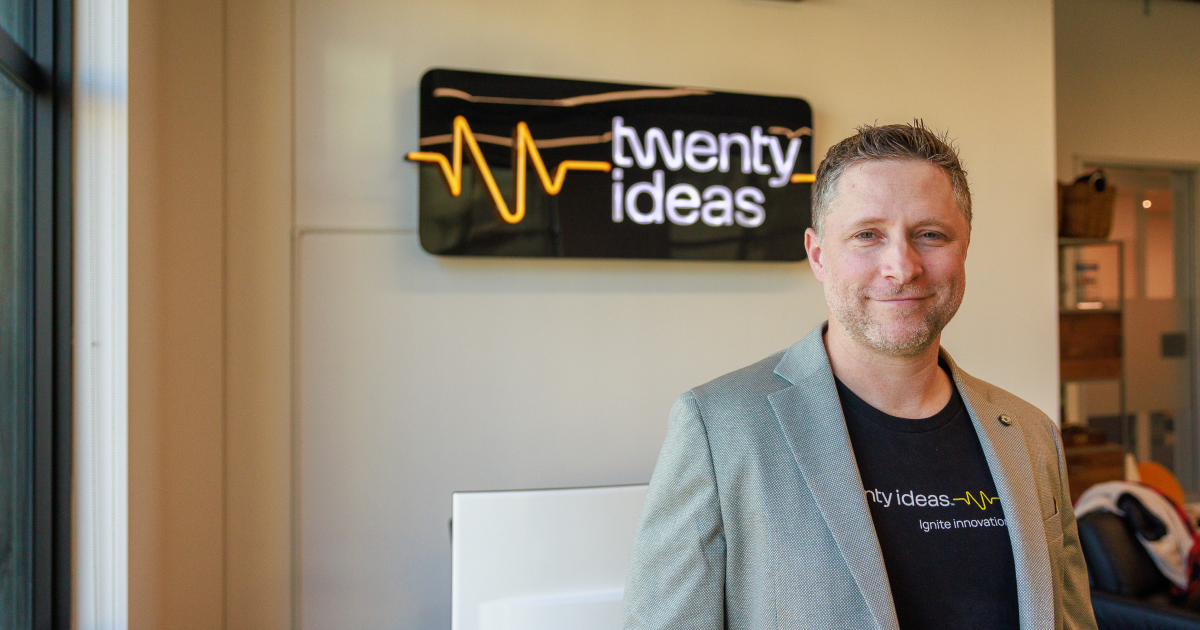
How to develop healthcare apps: a step-by-step guide
Jun 28
6 min read
Developing a digital healthcare product is a complex process. This article outlines some key aspects to consider during the development journey, with the goal of setting yourself up to create a valuable solution that contributes to improved patient outcomes and a more efficient healthcare system.
A checklist to develop your healthcare product
Creating a healthcare product requires meticulous research and planning. Some essential considerations to bear in mind while developing a healthcare product include:
User needs
When developing a health app, it's crucial to identify the needs of your end-users. These may include patients, healthcare professionals, and other stakeholders who may use or interact with the app.
User research can follow several formats, such as surveys, interviews, focus groups, and observational studies. The goal is to gather insights about your users' needs, preferences, and pain points related to your product’s goals. Some specific areas to explore might include:
- What are the characteristics of your potential users? Where do they live, how old are they, and what is their relationship like with technology? The more you understand your primary categories of users (known as “personas” in product and marketing strategy), the better you’ll be able to tailor your solution to their needs and preferences.
- What health goals do users have? What motivates them to achieve these goals?
- What barriers or challenges do users face in managing their health? What frustrations or pain points do they experience?
- What types of information or data do users need to monitor their health or make informed decisions? How do they prefer to access and use this information?
- What features or tools would users find helpful in achieving their health goals? What features might be unnecessary or even frustrating to them?
- What concerns do users have about privacy and security when using a health app? What features or assurances would they need to feel comfortable using the app?

Regulatory compliance
Healthcare products, including health apps, are subject to strict regulations and standards meant to ensure safety and effectiveness. For example, the US Food and Drug Administration (FDA) regulates many medical devices and software products to ensure they are safe and effective for their intended use.
When developing a health app, it's important to be familiar with the regulatory requirements in your target market, as these can vary by location and/or sector. Follow the guidance of regulatory bodies like the FDA to ensure that your app meets their standards for safety and effectiveness. Some compliance-minded steps might include:
- Determining the regulatory classification of your app
- Conducting thorough testing and validation
- Maintaining accurate and detailed documentation required by regulatory bodies
- Following best practices for data security and privacy
Clinical validation
Clinical validation is critical in developing healthcare products, including healthcare apps. It involves conducting studies or trials to demonstrate the product's safety, effectiveness, and potential benefits. Clinical validation can provide important evidence to support the product's claims and can help build trust among users, healthcare providers, and regulatory bodies.
Several important things must be considered when pursuing clinical validation of a healthcare product. Here are some of the most important factors to consider:
- Research study design
- Regulatory compliance
- Reliable data collection and management
- Adherence to ethical guidelines and best practices
- Data analysis and interpretation with appropriate statistical methods
- Communication and dissemination of study result to stakeholders
Data security and privacy
Healthcare products, including healthcare apps, often involve collecting and storing sensitive data such as personal health information (PHI), medical history, and other health-related data. Consequently, it is crucial to ensure that data security and privacy measures are put in place to protect data confidentiality and integrity.
Here are some important considerations for data security and privacy in healthcare product development:
- Compliance with regulations (HIPAA, GDPR, CCPA, FTC)
- Risk assessment
- Encryption and access controls
- Data backup and disaster recovery
- Staff training in data security and privacy best practices

Scalability
When developing a healthcare app, it's important to consider how to increase the product’s capacity to handle greater volumes of users and data as its adoption grows. A scalable app will meet the following criteria:
- Infrastructure that can handle an increase in traffic and user data
- App performance optimized to maintain speed and reliability
- Plans in place for managing and storing data over time
- High-quality user experience at any use level
- Strong security measures in place to protect user data
Integration with existing systems
Healthcare products must often integrate with existing healthcare systems like electronic health records (EHRs) and patient monitoring systems. To provide a cohesive user experience, it's essential that these products integrate seamlessly with these systems. When designing and developing digital healthcare products, consider the following key points to ensure smooth integration:
- Plan for compatibility with widely-used healthcare systems and standards. Use APIs or SDKs provided by EHR or monitoring system vendors, and plan for legacy and modern systems to maximize your product’s reach and usability.
- Ensure interoperability by adhering to established data formats and protocols, consider implementing standardized data models and terminologies, and work towards meeting industry-wide interoperability goals.
- Prioritize data security and privacy. Implement robust security measures, comply with regulations, design infrastructure to support role-based access control, and regularly audit the product’s security protocols.
- Focus on user experience by designing the product to align with healthcare professionals' workflows. Provide an intuitive interface and offer comprehensive user training and support.
- Plan for scalability and flexibility by designing the product with modularity in mind and staying abreast of emerging trends and technologies in healthcare.
Intellectual property
Protecting intellectual property (IP) is essential in any product development process. In the healthcare sector, patents, trademarks, and other forms of IP protection can be crucial to a product's success. They can help secure a competitive edge, attract investments, and safeguard against potential infringements. Here are some key points to consider when protecting IP:
- Define and document all IP assets and maintain a well-organized portfolio.
- Consult with experienced IP attorneys to help navigate the complex legal landscape of healthcare IP protection.
- Protect proprietary innovations with patents.
- Secure trademarks and trade secrets and implement strict confidentiality measures.
- Guard access to software and data.
- Develop IP agreements and policies.
- Monitor and enforce IP rights.

Funding
Healthcare product development can be costly, as it often involves substantial research, development, and manufacturing investments. Ensuring adequate funding to support the product's development and launch is critical for success. When looking for funding, consider the following:
- Develop a comprehensive business plan that includes your value proposition, target market, revenue projections, competitive analysis, industry trends, development timeline, and launch.
- Estimate funding requirements, accounting for the cost of product development, research, prototyping, regulatory approvals, operational expenses, marketing, manufacturing setup, and post-launch support.
- Identify potential funding sources, such as health-focused venture capital, angel investors, government grants, and industry-specific funds, and consider non-dilutive funding options to minimize equity loss.
- Prepare a persuasive pitch and tailor it to each potential investor.
- Network with industry stakeholders and connect with industry experts.
- Validate the product's efficacy and viability through clinical trials, pilot studies, or other forms of testing.
- Be prepared to discuss IP strategy and protection during funding negotiations.
- Plan for milestone-based funding by separating the development process into smaller milestones and seek funding for each stage separately.
Key takeaways
Creating a successful healthcare product requires knowing the target market, adhering to rules, validating the product clinically, ensuring data security and privacy, designing for scalability, integrating with current systems, protecting intellectual property, and securing adequate funding. Considering these elements throughout the product development process will set you up to develop a valued solution that promotes better health and healthcare outcomes for your target users..
Jana DiSanti
Jana DiSanti leads content strategy for Twenty Ideas. She brings nearly a decade of digital marketing, content creation, user research, and project management expertise to the table to advance the goals of the 20i agency and its clients. She specializes in promoting brands and products focused on improving the health of people, communities, and the planet.
by this author




